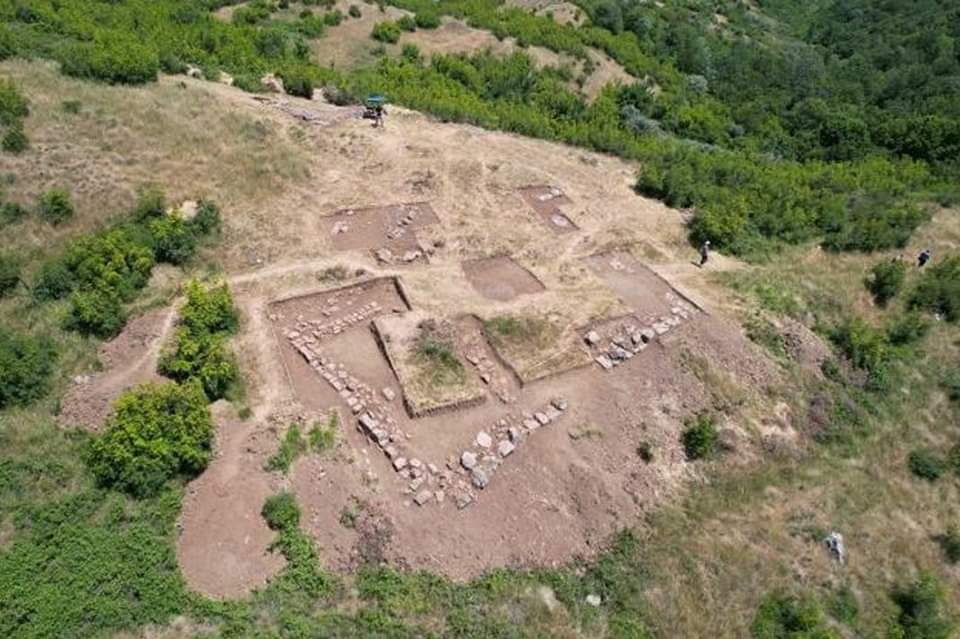

Vendbanimi i Bushatit është banuar për herë të parë 4000 vjet përpara .
Bassania një qytet ilir që ra nën kontrollin romak gjatë Luftërave Ilire. Vendndodhja e Bassanisë është sugjeruar më parë të jetë afër fshatit Pedhanë të Qarkut Lezhë, ose fshatit Bushat të Qarkut të Shkodrës. Bassania u përshkrua nga historiani romak Livius (59 p.e.s. – 17 p.e.s.) në kontekstin e luftës së ushtrisë romake me mbretin e fundit të ilirëve, Genti.
Studiuesit nga Shqipëria dhe Universiteti i Varshavës identifikuan mure mbrojtëse ciklopike dhe dy struktura guri që më parë mendoheshin të ishin formacione shkëmbore natyrore
Vendbanimi ndodhet midis dy qendrave të rëndësishme antike në zonën e Ilirisë – kryeqytetit ilir të Shkodrës dhe qytetit ilir të Lisit.
Si pjesë e një studimi të ri, ekipi aplikoi studime gjeofizike në kodër duke zbuluar një vendbanim që mbulon rreth 20 hektarë. Kjo bëri që arkeologët të fokusojnë gërmimet e dy ndërtesave të mëdha, njëra me përmasa 240 mt2 dhe tjetra 70 mt2 që datojnë nga periudha e qytetërimit ilir.
Fragmentet e qeramikës brenda ndërtesave kanë vërtetuar se vendi ka qenë i banuar për herë të parë që në vitin 2000 para Krishtit, ndërsa pjesët e amforave të importuara nga Italia janë datuar në shekullin III dhe II para Krishtit gjatë nivelit të pushtimit parësor.
Prof. Piotr Dyczek raportoi në PAP se strukturat nuk tregojnë prova të një përfundimi të dhunshëm me shkatërrim ose djegie. Vendbanimi u braktis dhe më vonë u rrënua për shkak të erozionit natyror dhe grabitjes së guroreve në shekujve për materiale ndërtimi.
…
Bassania was an Illyrian city that came under Roman control during the Illyrian Wars. The location of Bassania has previously been suggested to be near the village of Pedhanë in the Lezhë County, or the village of Bushat in the Shkodër County. Bassania was described by the Roman historian Livius (59 BC – AD 17) in the context of the struggle of the Roman army with the last king of the Illyrians, Gentios.
The researchers from Albania and the University of Warsaw identified cyclopean defensive walls and two stone structures previously thought to be natural rock formations on a hill near Shkodra, revealed to be a gatehouse and two bastions.
The settlement is situated between two important ancient centres in the area of former Illyria (now Albania) – the Illyrian capital of Shkoder and the Illyrian city of Lissos.
As part of a new study , the team applied geophysical surveys on the hill revealing a settlement that covers around 20 hectares. This led archaeologists to focus excavations of two large buildings, one measuring 240 mt2 and the other 70 mt2 that date from the period of Illyrian civilization
Fragments of pottery within the buildings has established that the site was first inhabited from as early as 2,000 BC, whilst pieces of amphorae imported from Italy have been dated to the 3rd and 2nd century BC during the primary occupation level.
Prof. Piotr Dyczek reported in PAP that the structures show no evidence of a violent end by destruction or burning. Instead, the settlement was abandoned and fell to ruin due to natural erosion and robbing of stone through quarrying over the centuries for building material.
© PAP





